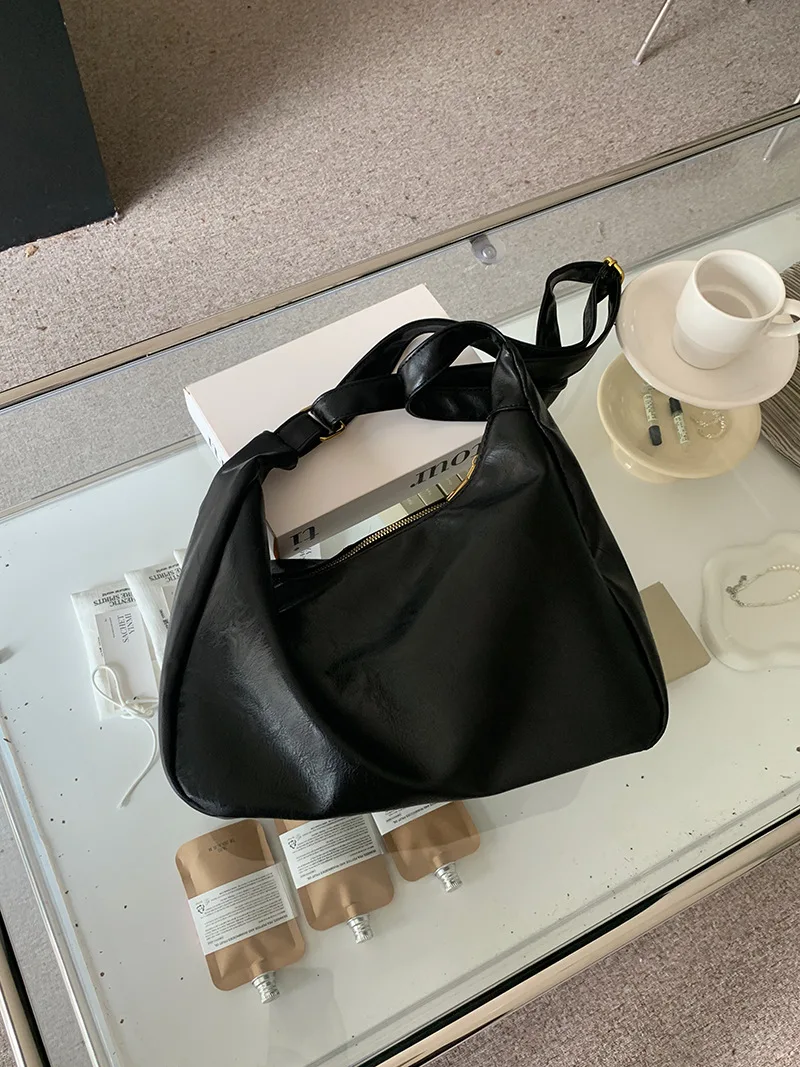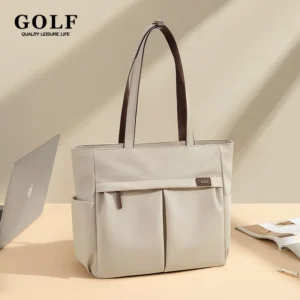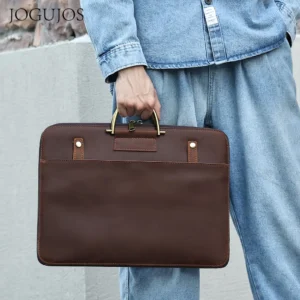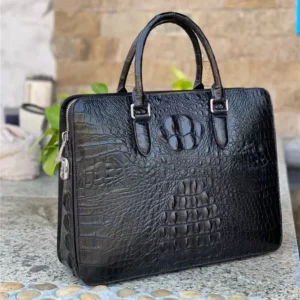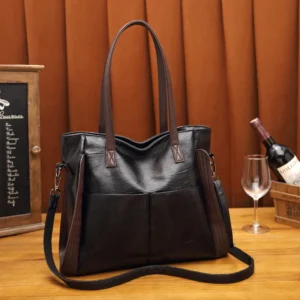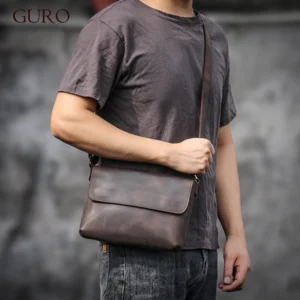Understanding the Value of Quality Leather Bags
A premium leather bag is more than just an accessory—it’s an investment that, with proper care, can last for decades rather than years. The difference between a well-maintained leather bag and a neglected one is striking: while the former develops a rich patina and maintains its structural integrity for 5+ years, the latter often shows irreversible damage within just 1-2 years of regular use.
Professional care techniques aren’t merely about aesthetics—they directly impact your bag’s longevity and financial value. Many classic leather briefcases actually appreciate in value over time when properly maintained, much like fine watches or vintage automobiles. This appreciation happens because quality leather develops character while maintaining functionality when properly cared for.
Throughout this comprehensive guide, you’ll discover the professional techniques that leather artisans and restoration experts use to preserve and protect fine leather goods. By understanding the science behind leather care and implementing proper maintenance routines, you can ensure your professional leather briefcases remain both beautiful and functional for years to come.
Leather Types & Their Unique Care Requirements
Before diving into specific care techniques, it’s essential to understand what type of leather your bag is made from. Different leather varieties respond differently to cleaning products, conditioning methods, and environmental factors. Recognizing your specific leather type will help you make informed decisions about appropriate care products and techniques.
When examining defining best leather briefcases, the material quality stands as perhaps the most critical factor. Let’s explore the main leather types and their specific care requirements.
Full-Grain & Top-Grain Leather
Full-grain leather represents the highest quality leather available, incorporating the entire top layer of the hide with its natural grain intact. This premium material:
- Features natural variations and markings that indicate authenticity
- Develops a rich patina over time, becoming more beautiful with age
- Requires regular conditioning to maintain suppleness
- Is more resistant to moisture than other leather types, but still needs protection
Top-grain leather, the second-highest quality, has had the uppermost surface slightly sanded to remove imperfections. While still excellent quality, top-grain leather:
- Has a more uniform appearance than full-grain
- Requires slightly more frequent conditioning
- May not develop the same depth of patina as full-grain
Many discerning professionals specifically seek out full-grain messenger bags for their exceptional durability and aging characteristics. Understanding the full-grain vs top-grain leather differences helps you provide appropriate care for your specific investment piece.
Suede & Nubuck
Suede and nubuck represent the opposite end of the leather texture spectrum, offering a velvety surface instead of a smooth one. These textured leathers have unique characteristics:
- Suede is created from the inner split of the hide and has a soft, fuzzy nap
- Nubuck is actually top-grain leather that’s been sanded to create a short, delicate nap
- Both are highly susceptible to water damage and staining
- Require specialized brushes and cleaning products
- Cannot be treated with standard leather conditioners
- Need protective sprays specifically formulated for napped leather
Common household items that can instantly damage these leathers include water, oil, and alcohol-based products. Even a small water droplet can leave a permanent mark if not properly addressed immediately.
Patent, Embossed & Specialty Leathers
Beyond the standard leather types, many bags feature specialty finishes that require unique care approaches:
- Patent leather has a high-gloss coating that repels water but can crack if not properly maintained
- Embossed and pebbled leathers feature textured surfaces that can trap dirt in their patterns
- Exotic leathers (python, crocodile, etc.) often need specialized care products specific to their unique properties
- Vachetta and other unfinished leathers darken naturally with exposure and handling
- Metallicized and colored leathers require special care to preserve their distinctive finishes
These specialty leathers often show damage patterns unique to their composition. For example, patent leather typically shows cracking rather than drying, while vachetta develops water spots more readily than other leather types.
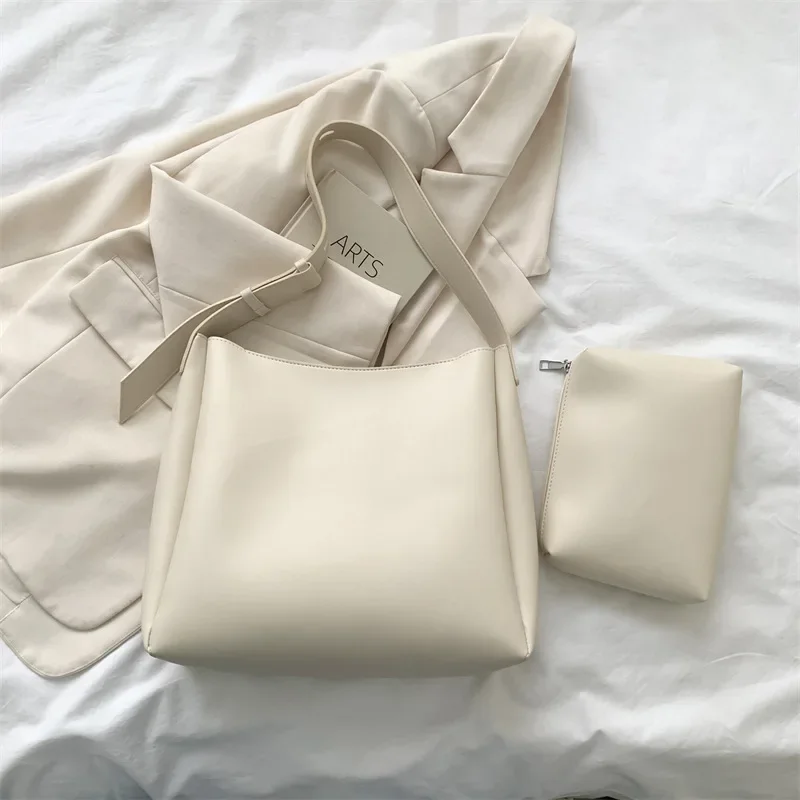
Essential Tools & Products for Professional-Level Leather Care
Creating a comprehensive leather care kit is the foundation of proper maintenance. Professional results require professional tools—cutting corners with improper products often leads to irreversible damage.
Cleaning & Conditioning Products
Selecting appropriate products for your specific leather type is essential for effective care without causing damage. Look for:
Leather Cleaners:
– pH-neutral formulas that won’t strip natural oils
– Soap-based cleaners for everyday dirt and grime
– Specialized cleaners for specific stains (ink, oil, etc.)
– Avoid products containing alcohol, turpentine, or mineral spirits
Leather Conditioners:
– Lanolin-based products for natural moisturizing
– Neatsfoot oil for traditional leather conditioning (but use sparingly)
– Beeswax-based products for water resistance
– Synthetic conditioners for consistent results
When selecting products for your leather bag, the same careful consideration used when choosing the perfect leather briefcase applies. Quality ingredients directly impact results and the long-term health of your leather.
For suede and nubuck, avoid liquid products entirely unless specifically formulated for these materials. Instead, rely on specialized brushes and erasers designed for textured leather surfaces.
Different leather satchels may require different product combinations depending on their specific leather type and finish. Always confirm product compatibility before applying to your entire bag.
Essential Tools & Applicators
The right tools make all the difference in leather care. Your professional kit should include:
- Microfiber cloths for cleaning and product application
- Cotton cloths for buffing and polishing
- Chamois leather for final buffing
- Horsehair brush for cleaning smooth leather
- Rubber or crepe brush for removing dry dirt
- Brass brush for suede (used very gently)
- Suede brush with multiple textures for restoring nap
- Leather erasers for spot cleaning
- Applicator sponges for even product distribution
Proper organization of these tools prevents cross-contamination between products and materials. Store brushes bristle-up and cloths in sealed containers to prevent dust accumulation.
Products & Ingredients to Avoid
Many popular household products can cause severe damage to fine leather:
- Baby wipes (contain alcohol and chemicals that dry leather)
- Vinegar (too acidic for leather)
- Household soaps and detergents (strip natural oils)
- Furniture polish (creates build-up and uneven finish)
- Alcohol-based products (cause drying and cracking)
- Petroleum-based products (cause oversaturation)
- Silicone products (prevent leather from breathing)
Even products marketed as “leather cleaners” may contain harmful ingredients—always check the composition and test on an inconspicuous area first.
Establishing a Professional Care Routine
Consistent maintenance prevents major issues and preserves your bag’s appearance. The frequency of care depends on usage patterns, environmental conditions, and leather type. When planning care for your ideal leather briefcase, consider creating a structured maintenance schedule.
Daily Maintenance & Preventative Care
Simple daily habits dramatically extend your bag’s lifespan:
- Wipe down with a dry microfiber cloth after each use
- Remove surface dirt before it becomes embedded
- Empty your bag completely when not in use
- Avoid placing on dirty or wet surfaces
- Keep hand sanitizer, cosmetics, and pens in separate pouches to prevent leaks
- Store properly when not in use (more on this later)
These small preventative measures significantly reduce the need for deep cleaning and restoration later. Many top-rated classic leather briefcases maintain their appearance for decades simply because their owners implement consistent daily care.
Weekly & Monthly Care Procedures
More thorough maintenance should be performed regularly, especially for bags used daily:
- Weekly surface cleaning with a leather-specific cleaner
- Monthly conditioning for bags used frequently
- Quarterly conditioning for occasionally used bags
- Hardware cleaning and polishing monthly
- Interior cleaning and organization monthly
- Special attention to high-touch areas (handles, closures)
Different bag types may require adjusted schedules. For example, leather laptop work totes often need more frequent conditioning around stress points where the weight of electronic devices creates strain.
Seasonal & Deep Care Procedures
Seasonal transitions require special attention to prepare your leather for changing conditions:
- Before winter: Deep conditioning and waterproofing to prepare for cold, potentially wet conditions
- Before summer: UV protection application to prevent sun damage
- Twice-yearly deep cleaning regardless of visible soiling
- Annual hardware maintenance, including tightening loose elements
Environmental factors dramatically impact leather condition—winter salt exposure can be particularly damaging, while summer humidity can promote mold growth if bags aren’t properly aired out.
Step-by-Step Cleaning Techniques for Different Leather Types
Proper cleaning technique varies significantly between leather types. Before cleaning any leather bag:
- Test products on an inconspicuous area first
- Gather all necessary tools before beginning
- Work in a clean, well-lit environment
- Remove all contents and hardware (if possible)
- Identify the specific leather type
When evaluating different classic leather briefcase comparison options, proper cleaning techniques preserve the qualities that made the bag worth investing in initially.
Cleaning Smooth Leather Surfaces
For full-grain, top-grain, and other smooth leather finishes:
- Remove surface dust with a soft brush or dry cloth
- Apply a small amount of leather cleaner to a damp cloth (never directly to the leather)
- Work in small sections using gentle circular motions
- For stubborn spots, let the cleaner sit briefly before gently working it in
- Wipe away cleaner with a clean, damp cloth
- Allow to air dry away from direct heat or sunlight
- Once dry, assess if conditioning is needed
When cleaning brown leather briefcases, work evenly across sections to prevent water spots or uneven cleaning patterns.
Suede and Nubuck Cleaning Methods
Textured leathers require completely different cleaning approaches:
- Start with a suede brush to remove surface dirt, always brushing in the same direction as the nap
- Use a suede eraser for small stains, gently rubbing without applying excessive pressure
- For stubborn stains, use a specialized suede cleaner following product instructions precisely
- Allow to dry completely between applications
- Restore the nap using a suede brush after cleaning
Never apply liquid cleaners meant for smooth leather to suede or nubuck, as they can permanently damage the surface texture.
Patent and Specialty Leather Cleaning
For high-gloss and specialty finishes:
- Use a soft cloth dampened with water for regular cleaning
- For fingerprints and smudges, use a cleaner specifically formulated for patent leather
- Apply with light pressure in straight motions rather than circles
- Buff immediately after cleaning to restore shine
- For embossed patterns, use a soft brush to reach recessed areas
Exotic leathers often require specialized professional cleaning, as improper techniques can irreversibly damage these expensive materials.
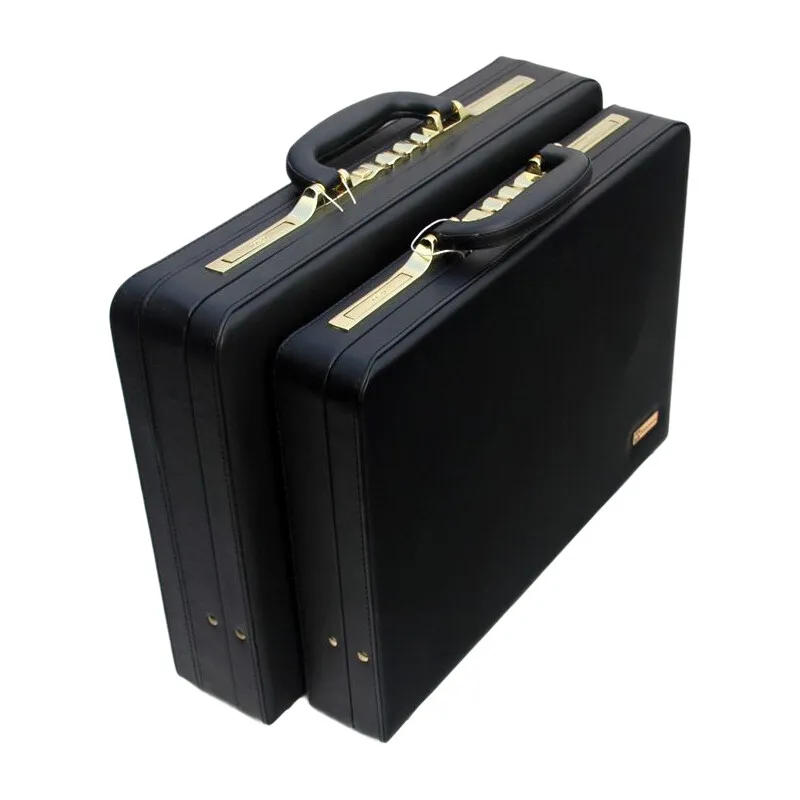
Conditioning & Moisturizing: Preserving Leather’s Suppleness
Conditioning is perhaps the most crucial element of leather maintenance. Leather is skin that requires moisture to remain supple and prevent cracking. Signs your bag needs conditioning include:
- Stiff or rigid texture
- Dull appearance lacking luster
- Visible dryness, especially at flex points
- Light surface cracking
- Leather that feels “papery” when touched
Understanding the importance of proper conditioning helps maintain the value of even affordable quality leather briefcases, transforming them from simple accessories into lasting investments.
Conditioning Techniques for Different Leather Types
Different leather types require specific conditioning approaches:
For Full-Grain and Top-Grain Leather:
1. Apply a small amount of conditioner to a clean cloth
2. Work in small sections using gentle circular motions
3. Allow the conditioner to absorb for the time specified by the product (usually 5-15 minutes)
4. Buff away excess with a clean cloth
5. Allow to fully dry before using (usually 24 hours for deep conditioning)
For Treated and Semi-Aniline Leather:
1. Use less conditioner than you would for full-grain
2. Focus on even, light application
3. Buff thoroughly to prevent product build-up
Specialty leathers like crazy horse leather satchels develop their distinctive appearance through specific conditioning techniques that enhance their natural pull-up effect and color variations.
Restoration Techniques for Dry or Neglected Leather
Severely neglected leather requires a gradual approach to restoration:
- Begin with gentle cleaning to remove surface grime
- Apply a leather reviver product specifically designed for dry leather
- Use multiple light applications rather than one heavy application
- Allow 24-48 hours between conditioning sessions
- Gradually increase conditioning intensity if needed
- For severe cases, consider professional restoration
Patience is essential—attempting to rush restoration often results in oversaturation, which causes its own problems including darkening, stretching, and weakened structure.
Protection: Waterproofing & Stain Prevention
Preventative protection significantly reduces maintenance requirements and extends your bag’s life. When investing in durable leather briefcase options, protective treatments enhance the natural resilience of quality leather.
Waterproofing Techniques & Products
Different waterproofing options offer varying levels of protection:
- Spray protectors create an invisible barrier that repels water
- Wax-based products offer more robust protection but may slightly darken leather
- Cream protectors penetrate more deeply for longer-lasting results
Application technique significantly impacts effectiveness:
- Clean and condition leather before applying protectant
- Apply to completely dry leather (wait 24 hours after conditioning)
- Spray from the recommended distance (usually 6-8 inches)
- Apply in thin, even coats rather than heavy application
- Allow to dry completely between coats
- Reapply based on usage patterns (typically every 3-6 months)
Even vegan leather briefcases benefit from appropriate protective treatments, though the specific products should be formulated for synthetic materials.
Stain Resistance & Environmental Protection
Beyond water protection, consider:
- UV protectants to prevent color fading, especially for bags frequently used outdoors
- Stain repellents that guard against oil-based stains
- All-weather protectants for bags exposed to varied conditions
No protective treatment creates an impermeable barrier—they simply provide additional time to address spills before they penetrate the leather. Always blot spills immediately, even on protected leather.
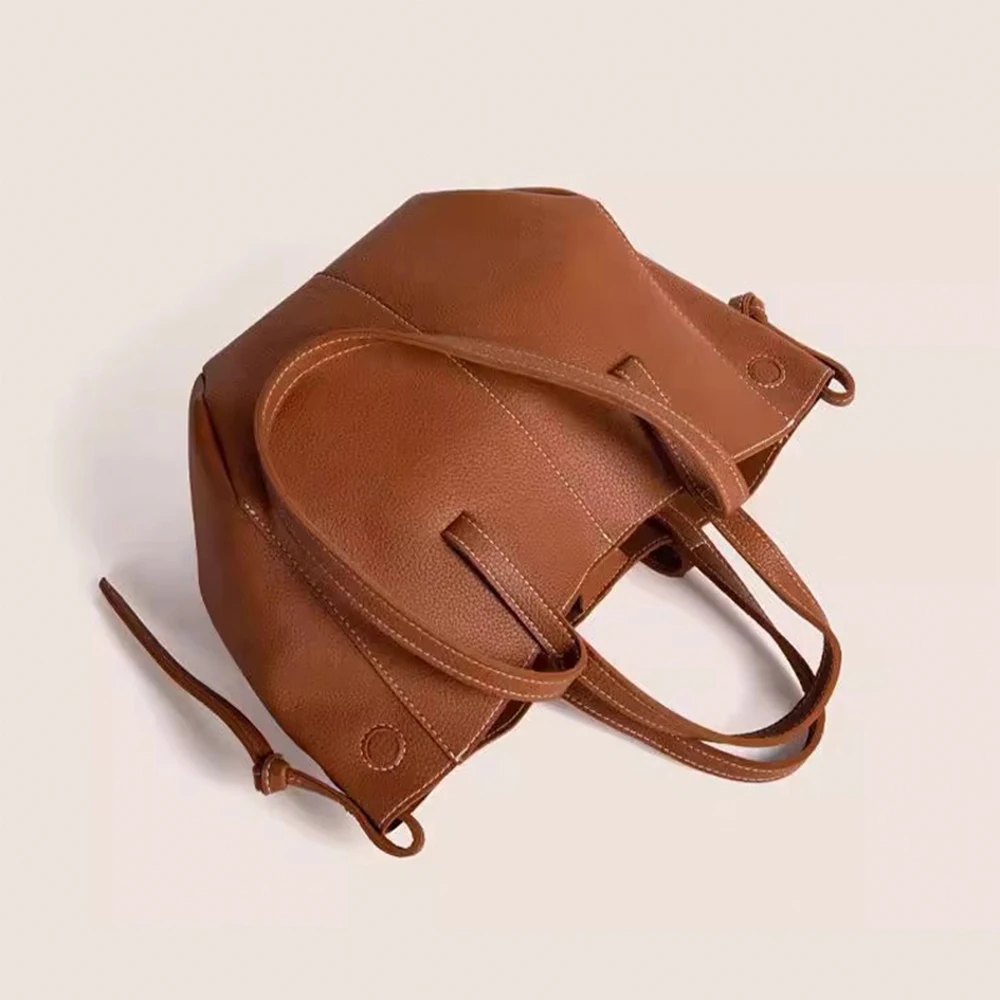
Troubleshooting Common Leather Bag Problems
Even with excellent preventative care, accidents happen. Knowing how to address common issues quickly can prevent permanent damage. For comprehensive leather care, the definitive guide to classic leather briefcases provides insights into maintaining specific bag types.
Water Damage & Stains
Water exposure requires immediate action:
- Blot (don’t rub) excess water immediately with an absorbent cloth
- Allow to air dry naturally away from heat sources
- Once completely dry, assess for water spots or staining
- For existing water marks, try specialized leather water stain remover
- Apply conditioner after treating water damage, as moisture often strips natural oils
Water damage appears differently on different leather types—full-grain often shows distinct rings, while treated leathers may develop uneven darkening or lightening.
Oil, Ink & Color Transfer Issues
Different stains require specific approaches:
For Oil and Grease:
– Blot excess immediately (do not rub)
– Apply cornstarch or talcum powder to absorb oil
– Let sit for several hours or overnight
– Gently brush away powder
– Repeat if necessary before cleaning with leather cleaner
For Ink:
– Address immediately for best results
– Use ink-specific leather cleaners following product instructions
– For ballpoint ink, specialized leather ink removers are most effective
– Permanent marker often requires professional treatment
– Test all products on an inconspicuous area first
For Color Transfer:
– Clean immediately with leather cleaner
– For stubborn transfer, leather-specific color removers may help
– Use gentle, patient application rather than vigorous rubbing
Scratches, Scuffs & Structural Damage
Leather scratches can often be minimized:
- For surface scratches, gently buff with a soft cloth
- Apply small amount of conditioner to the area and work in with fingertip
- For deeper scratches, leather scratch repair products matched to your leather color
- Structural damage, particularly to stress points like handles or corners, often requires professional repair
Slim leather laptop briefcases frequently show wear at stress points where the weight of technology creates pressure—regular conditioning of these areas prevents cracking.
Proper Storage & Travel with Leather Bags
Proper storage is as important as active care in maintaining your leather bag’s condition and appearance. Appropriate storage prevents shape distortion, color fading, and material degradation.
Men's Classic Leather Briefcase, Slim Leather Laptop Briefcase, Slim Leather Portfolio Briefcase
$93.67 Select options This product has multiple variants. The options may be chosen on the product pageLeather Laptop Work Tote, Tan Leather Work Tote, Women's Leather Work Tote, Zippered Leather Work Tote
Price range: $223.62 through $237.97 Select options This product has multiple variants. The options may be chosen on the product pageClassic Laptop Briefcase, Men's Classic Leather Briefcase, Slim Leather Attache Case
Price range: $353.50 through $360.81 Select options This product has multiple variants. The options may be chosen on the product pageBlack Leather Briefcase, Leather Document Bag, Men's Classic Leather Briefcase
Genuine Crocodile Leather Executive Briefcase with Password Lock – Premium Business Document Carrier$1,201.87 Select options This product has multiple variants. The options may be chosen on the product pageBlack Leather Satchel, Brown Leather Satchel, Vegan Leather Work Tote
Price range: $69.58 through $73.23 Select options This product has multiple variants. The options may be chosen on the product pageCrazy Horse Leather Satchel, Men's Leather Satchel, Men's Professional Leather Messenger, Vintage Style Messenger Bag
$132.70 Select options This product has multiple variants. The options may be chosen on the product page
Daily Storage Solutions
Between uses, proper storage prevents unnecessary wear:
- Store upright when possible to maintain shape
- Use the original dust bag or a cotton pillowcase
- Keep away from direct sunlight, which causes fading
- Maintain distance from heat sources including radiators and heating vents
- Avoid hanging by handles, which causes stretching and deformation
- Remove heavy items when not in use
Many leather care issues stem from improper daily storage rather than actual use. Creating a designated space for your bag prevents accidental damage from household hazards.
Long-Term Storage & Travel Considerations
For seasonal or extended storage:
- Clean and condition thoroughly before storing
- Stuff bag with acid-free tissue paper or breathable fabric to maintain shape
- Never use newspaper, which can transfer ink
- Use dust bags made from natural, breathable fabrics
- Store in a cool, dry place with stable temperature
- Check periodically and air out to prevent mustiness
- Consider humidity control products for leather storage areas
When traveling with black leather messenger bags or other leather accessories, pack carefully to prevent crushing or exposure to potentially damaging substances in your luggage.
When & How to Seek Professional Leather Care Services
While many leather care tasks can be performed at home, certain situations warrant professional intervention:
- Deep set stains that don’t respond to DIY methods
- Structural damage including torn seams or handle attachments
- Color restoration for faded leather
- Significant water or heat damage
- Mold or mildew issues
- Vintage bag restoration
Professional leather specialists have access to commercial-grade products, specialized equipment, and techniques not available to consumers.
Finding & Evaluating Professional Services
When seeking professional leather care:
- Research specialists specifically experienced with leather bags (not just general leather or shoe repair)
- Ask for examples of similar work they’ve completed
- Inquire about their approach to your specific issue
- Request a clear timeline and cost estimate
- Confirm what products they use and their compatibility with your leather type
- Ask about guarantees or warranties on their work
Quality professional restoration often costs 15-25% of the bag’s replacement value—an investment worth making for valuable pieces.
Debunking Common Leather Care Myths
Misinformation about leather care abounds, often leading to well-intentioned but damaging practices. Understanding fact versus fiction helps prevent irreversible damage.
Household Remedies & Internet Myths
Common but harmful leather care myths include:
Myth: Olive oil or other cooking oils make good leather conditioners.
Reality: They turn rancid over time, causing odor and degradation.Myth: Vinegar is a good natural leather cleaner.
Reality: Its acidity damages leather’s structure and finish.Myth: Hairspray removes ink stains from leather.
Reality: The alcohol content dries leather and can spread the stain.Myth: Petroleum jelly is a good leather conditioner.
Reality: It clogs pores, prevents leather from breathing, and causes buildup.Myth: All leather products need the same care routine.
Reality: Different vegan leather alternatives require completely different care approaches than animal leather.
When considering unconventional advice, remember that leather is a natural material with specific scientific properties—treatments that violate these principles typically cause damage, even if initial results seem positive.
Sustainable Leather Care Practices
Proper leather care is inherently sustainable—by extending your bag’s useful life, you reduce the need for replacement and minimize waste. Additional sustainable approaches include:
- Choosing biodegradable cleaning and conditioning products
- Purchasing multi-purpose products to reduce packaging waste
- Repairing instead of replacing when damage occurs
- Using natural materials for cleaning and storage
- Supporting artisans who restore vintage leather goods
Quality leather properly maintained becomes more beautiful with age—the antithesis of disposable fashion.
The Heritage & Future of Leather Craftsmanship
The traditions of leather craftsmanship date back thousands of years, with care techniques passed down through generations. When you properly maintain a quality leather bag, you participate in this heritage of preservation and respect for natural materials.
Well-maintained leather develops a patina—a personal signature that tells the story of its use and care. This gradual transformation adds character while maintaining functionality, often making properly aged leather goods more valuable and distinctive than new pieces.
The finest leather bags can last for decades or even be passed to future generations when properly maintained. At Poise Porter, we believe that investing time in proper leather care honors both the craftsmanship of the artisans who created your bag and the natural materials from which it was made.
As manufacturing and material science evolve, new leather treatments and care products continue to emerge. However, the fundamental principles of leather care—clean, condition, protect—remain unchanged. By mastering these essentials and establishing a consistent care routine, you ensure that your leather investment provides both function and beauty for years to come.

